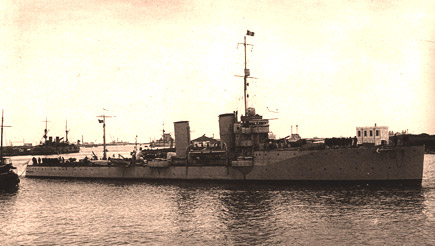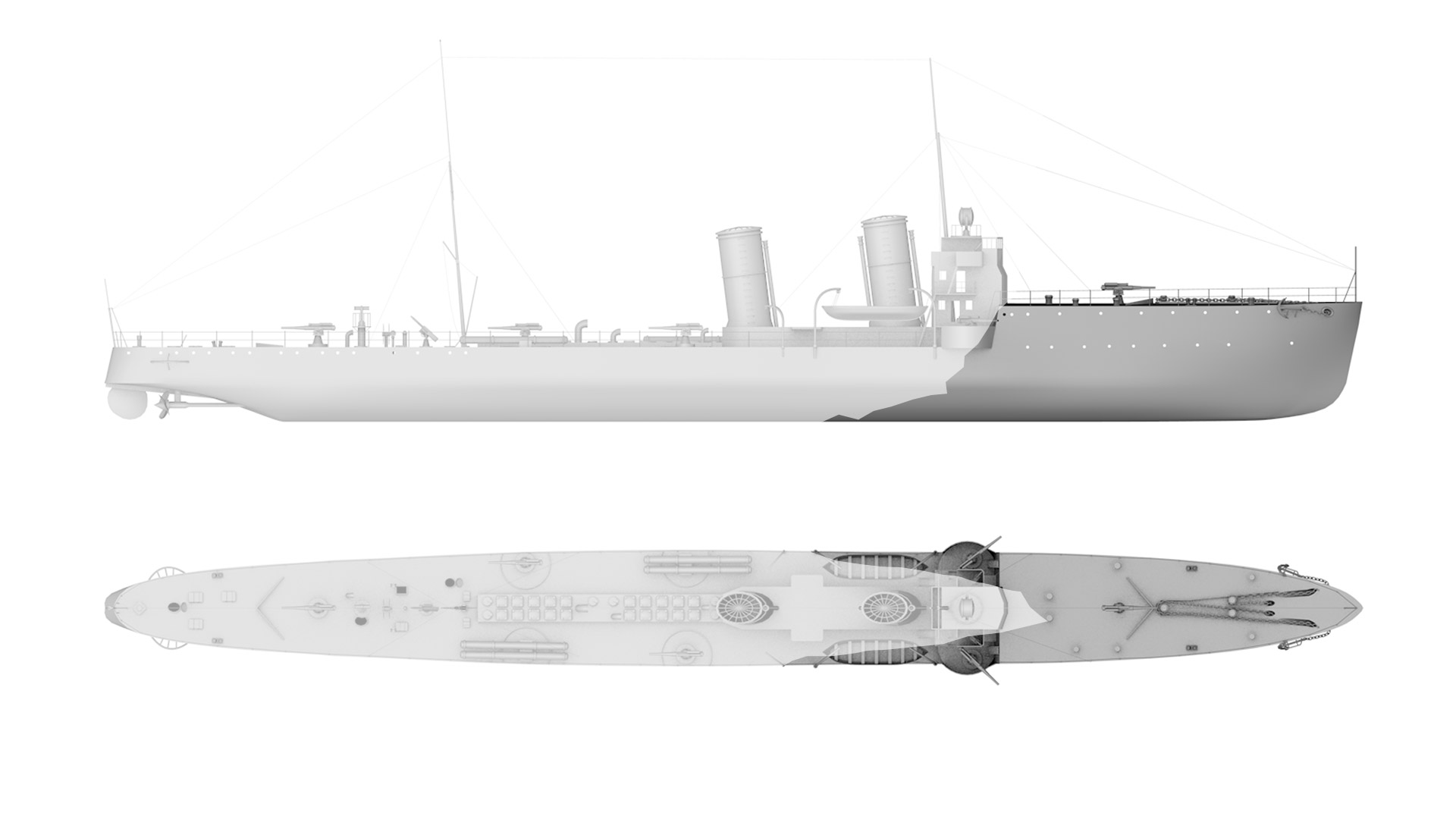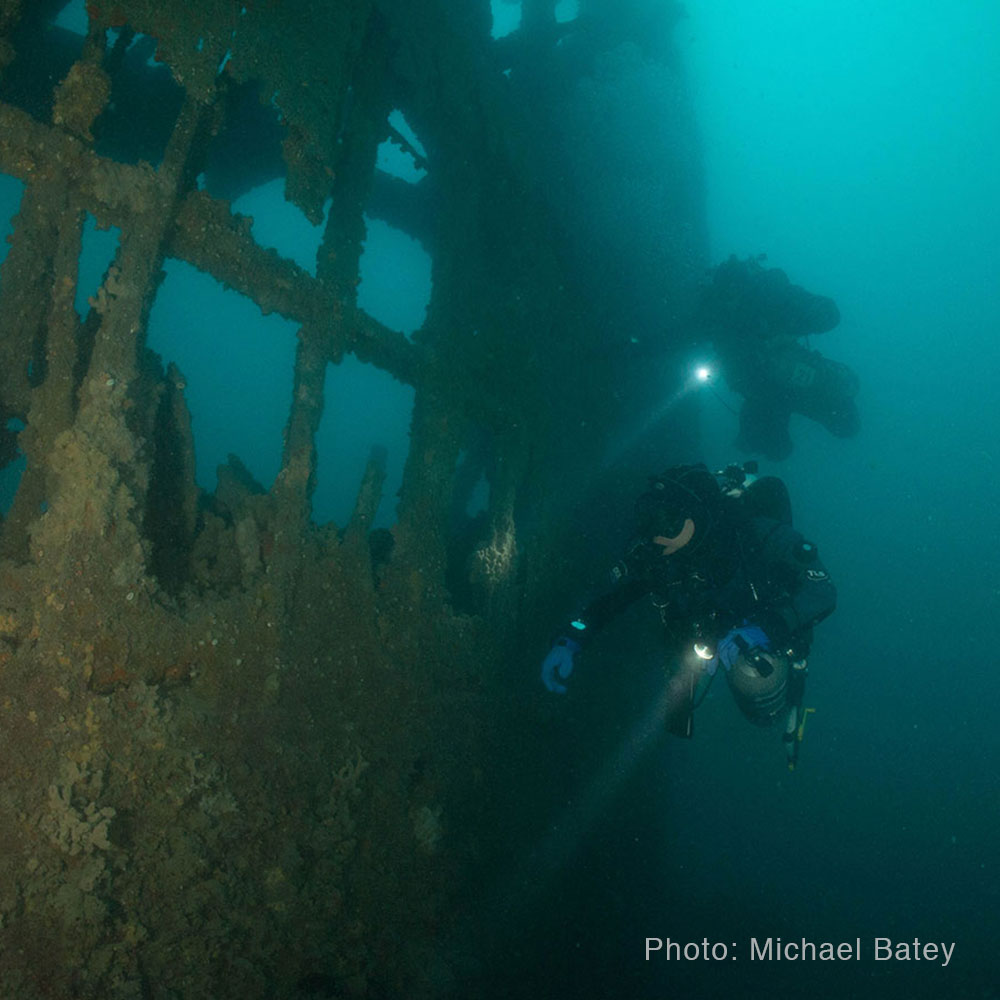Sorry - Your web browser does not support all features of this 3D tour
Please upgrade to the latest version, or download a modern web browser such as Google Chrome or Mozilla Firefox.
IgnorePlease upgrade to the latest version, or download a modern web browser such as Google Chrome or Mozilla Firefox.
Ignore
Cesare Rossarol was an Italian light scout cruiser measuring 85 m (279 ft) long and 8 m (26 ft) wide. She was equipped with Yarrow type 3 three-drum water tube boilers with water pipes, two groups of steam turbines Belluzzo of 24,000 hp (18,000 kW), two 3-blade propellers, a fuel capacity of 325 tons, giving her a range for 2,400 miles at 13 knots. She could launch torpedoes while maintaining a constant speed of over 30 knots. With a displacement of 891 tons or 1,270 tons when full, she was fitted with six 102/35 mm, four tls. trainings 45 mm and two 40/39 machine-guns with a mine positioning system, making her the equivalent of the Austro-Hungarian Novara-class light cruisers.
At the end of the war Cesare Rossarol was off the coast of Austria-Hungary, outside the empire's main naval harbour and arsenal at Pola. She had been assigned to serve as an anti-submarine patrol ship after giving support to the landing and occupation of the city when Lieutenant Ludovico De Filippi, captain of Cesare Rossarol, received orders to escort a Serbian officer to Fiume whose orders were to convince the Serb-Croatian irregular troops not to oppose to the Italian occupation of the city. Just before noon, she moved down from Pola to Cape Kamenjak and then on towards Fiume Harbour only to hit a mine early on Saturday afternoon 16 November 1918.
The force of the explosion almost instantly tore the ship in two parts. The bow quickly sank vertically, while the severely damaged 30-meter high stern drifted for another hundred meters before sinking. Eighteen other ships arrived at the site, but most of the crew were trapped inside the hull and went down with the ship.
The sinking of Cesare Rossarol two nautical miles off the coast of Lisignano left ninety-three petty officers and marines dead, including seven officers and the captain and was one of the largest losses of life for the Italian navy during the war.


The Stella d'Italia, also known as "Stellone" is the oldest Italian patriotic symbol, dating back to ancient Greece. All Italian Navy ships have this Stella made out of bronze on the bow. The Cesare Rossarol as no exception to this, still has its bronze star on the front of the bow. (Photo: Rene Lipmann)

While going around the bow, the anchor from the star board side is still in its position like nothing happened to the ship. (Photo: Jeroen Veltrop)


Over time more and more metal sheets from the hull are falling of the bow, slowly revealing the skeleton of the wreck. The project team determined more sheets falling from the structure over the past 4 years.
With good visibility you have the opportunity to swim through the bow section. It is easy to enter through the hole the fallen metal sheets left, and exit through the broken section. Still a lot of artefacts can be seen as for example racks with grenades. (Video: Jeroen Veltrop)
On star- and port side, on the hip of the ship, an 102/45 canon was placed. On the stern it is obvious that all armory is still in place. The only armory from the bow is found on the star board side near the broken section. All other canons and torpedo tubes from the bow and middle section of the ship are still not found. (Video: Jeroen Veltrop)

